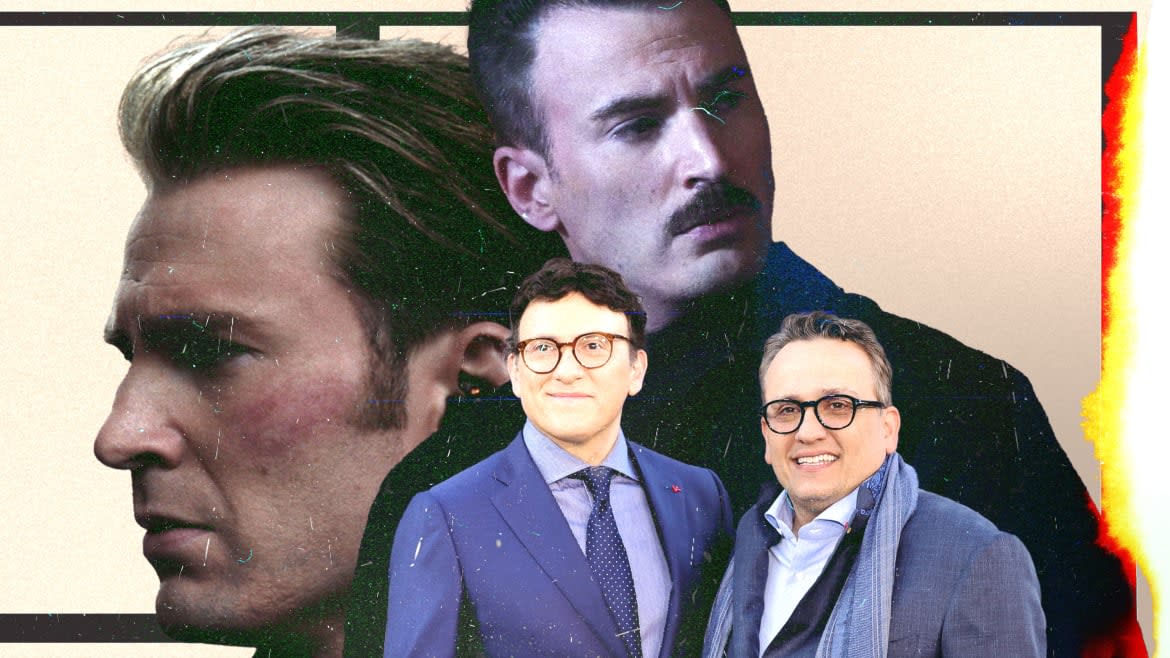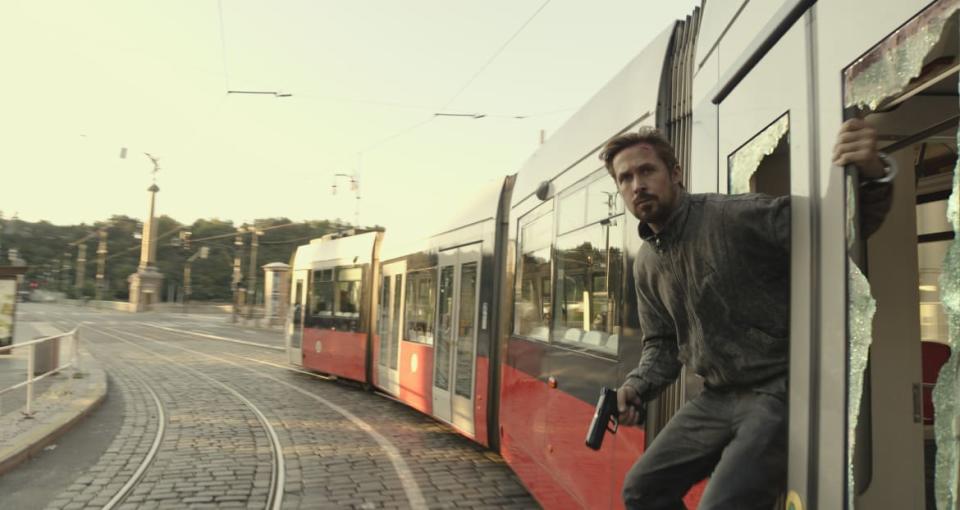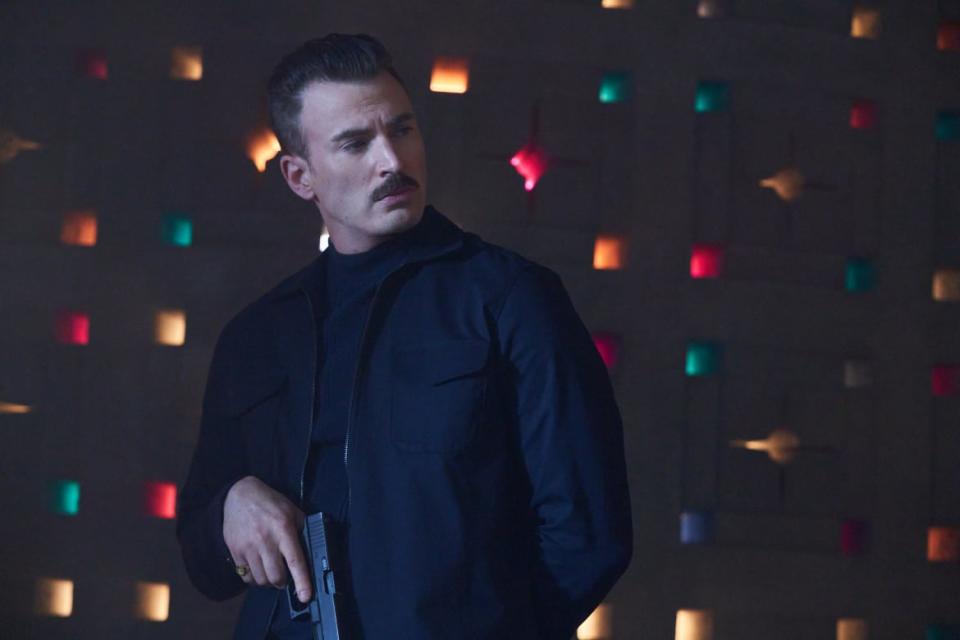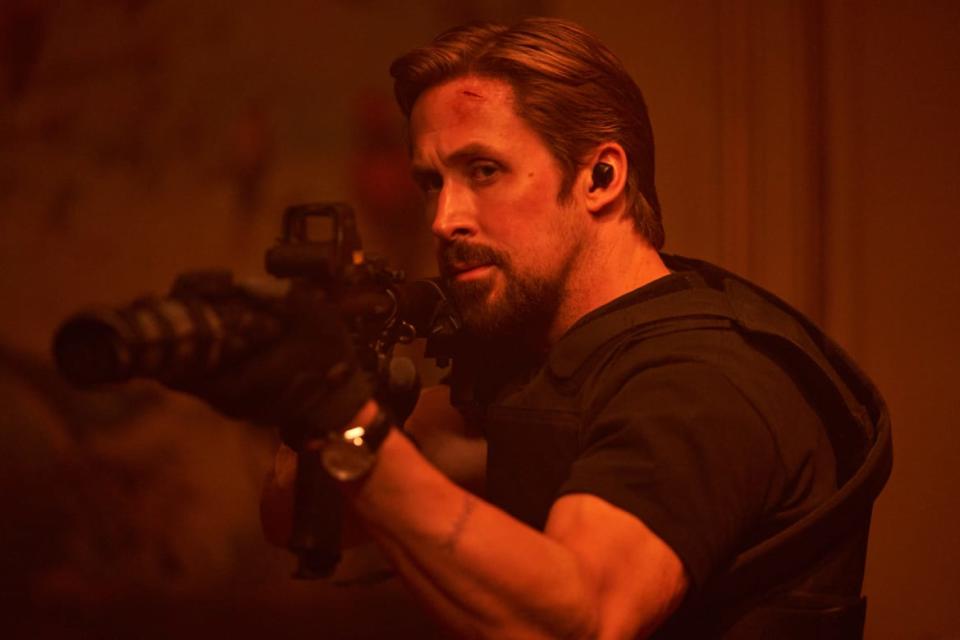‘The Gray Man’: All the Secrets Behind Netflix’s Most Expensive Movie

- Oops!Something went wrong.Please try again later.
- Oops!Something went wrong.Please try again later.
- Oops!Something went wrong.Please try again later.
- Oops!Something went wrong.Please try again later.
After helming the second-biggest film in box-office history—namely, Avengers: Endgame, their fourth Marvel Cinematic Universe feature following Avengers: Infinity War, Captain America: Civil War and Captain America: The Winter Soldier—Joe and Anthony Russo stepped away from the superhero game.
But their franchise-filmmaking ambitions are back with The Gray Man, an adaptation of Mark Greaney’s novel that aspires to kickstart a slam-bang espionage series shouldered by leading man Ryan Gosling. Their first directorial outing for Netflix (which released it in theaters this weekend ahead of its July 22 streaming bow), it’s the most expensive production in the online service’s history. Reports are that it cost upwards of $200 million.
It’s a spy-vs-spy spectacular of massive shootouts, hand-to-hand skirmishes, vehicular chases and shadowy government conspiracies. Pitting Gosling’s CIA agent Sierra Six (what a name) against Chris Evans’ sociopathic mercenary Lloyd Hansen in a globe-trotting clash of wills, the Russos’ latest is a blast of big-budget summer action that’s staged with the adrenalized flair and personality that’s become their stock and trade.
The Gray Man is the sort of film that’s historically been produced by major studios, so the fact that it’s a Netflix effort—with a star-studded cast that also includes Ana de Armas, Billy Bob Thornton and Regé-Jean Page—says a lot about the constantly changing tides of the entertainment industry. As has been the case for the past decade, the Russos are at the vanguard of that paradigm shift, even as they continue to concoct the very large-scale popcorn extravaganzas that have long buoyed the business.

Designed to be seen on the most enormous screen possible, and yet a character-driven affair that thrives courtesy of its headliners’ charisma (particularly Evans’ magnetic cockiness as a psychopath with a demented sense of humor), The Gray Man is a blockbuster for a new platform-straddling age.
Whether that makes it a sign of things to come remains to be seen. Still, considering that the Russos’ next project (The Electric State, with Millie Bobby Brown) is also headed to Netflix, it was one of many topics that arose during our wide-ranging chat with the directors, who are successfully demonstrating how to navigate cinema’s fluctuating landscape—and proving, in the process, that there’s life after Marvel.
Chris Evans’ Lloyd calls Ryan Gosling’s Sierra Six a “Ken Doll,” which begs the question: Was that line a deliberate reference to Ryan’s upcoming role in Barbie, or just a successful attempt at manifesting a dream into reality?
Joe: It was prior to Ryan having accepted that role, and us being aware of him even talking about that role. But we like to believe we manifested it into existence. In fact, I think we helped Ryan unlock his “Ken-ergy” so he could accept that part.
You guys have moved on from Marvel—at least for now—and yet The Gray Man feels like an initial entry in what could become its own serialized franchise. Was that potential a part of its appeal?
Anthony: Absolutely. When we finished Endgame, we moved forward from there and formed a company with Chris Markus and Steve McFeely, who wrote all the Marvel movies we did. The four of us together discovered that we had an immense love for universe storytelling, and we wanted to keep that going with one another. They have contributed to The Gray Man as writers, and we very much think of this story as a universe. We have a lot of places to go. Part of the reason we have such a large ensemble in this first movie, played by so many amazing actors, is that we like to have the options of thinking about moving forward with any of them, or moving backwards with any of them. That’s a big part of the appeal of this for us, and we’ll see—hopefully audiences will respond in a way that we’ll get to explore it more in the future.
The Marvel Cinematic Universe’s Phase 4 Has Been a Total Train Wreck
The Gray Man is a Netflix production that’s premiering in theaters before debuting on the streaming platform. Do you see that release-strategy paradigm becoming the new normal—and does it dictate how you construct the film?
Anthony: I will say this: We designed this movie for a theater. It’s big cinema. We designed it visually, and on a sound level, as if it was going to play in a theater—which it is. But we also love digital distribution. We love streaming. We don’t have any bias against it in any way. We love reaching the audience in every way you possibly can, and there are a lot of people who are only going to be reached through Netflix’s unique platform that you couldn’t get to otherwise—globally. So we love the whole process, we trust the process, we trust the evolution.
I think this is something that’s complicated. I think Netflix definitely has more ambitions to have a larger presence in theaters. It’s complicated by the fact that the heart of their business is streaming and the heart of the other studios’ business is theatrical. It’s hard for them to sort out their presence among the theaters, with the distributors, because of those complicated relationships. But I know they’re working on it, and they’re trying to figure it out. We personally keep encouraging them to do that. We would be very excited if Netflix could figure out a larger theatrical agenda that can complement their streaming. But this is all market forces that are very much beyond all of us, and it’ll be interesting to see where it goes.
Given that The Gray Man operates in a familiar espionage arena, what deliberate steps did you take to differentiate it from the Jason Bournes, Mission: Impossibles, and James Bonds of the world?
Anthony: Part of our response to the novel in the first place had to do, specifically, with what you’re asking about: the idea of the Gray Man. A lot of the time, the lead spy in the genre will have a flamboyant attitude, a bravado and a recklessness, and there’ll be a charming-everybody-in-the-room kind of idea, and a romantic idea, etc. This character didn’t. This guy was built as the spy’s spy. This guy was somebody who wanted to disappear, to live in the shadows, to not be seen. To say very little, to conserve his energy, and to only use what he has to. On a DNA level, the character was built the opposite of what we generally know in the genre. We love that, and we just kept expanding upon that as we continued to develop the character and the movie.

Joe: He’s an antihero who’s in an existential crisis to start the film. He’s also a proletariat hero; this is a tough, blue-collar hero who has no allegiance to the CIA other than that they kept him out of prison. His only goal is a very simple goal: He just wants to taste freedom for five minutes before he dies. He’s then forced to reveal his character when somebody he cares about is kidnapped and held hostage, and he has to step out of the gray and into the light. At heart, the movie is a pugilistic parable between two characters who are different sides of the same coin. Lloyd and Sierra Six are both assassins, and the only difference is that Sierra Six leans toward humanity, while Lloyd leans away from humanity. And that seems to be, sadly, a very current issue that we’re dealing with in the world today.
How did you settle on Ryan and Chris as these yin-yang characters—and why Ryan for Sierra Six and Chris for Lloyd, which is obviously a quite different role than the one he played for you and Marvel?
Anthony: With Chris, having the privilege of working with him for those many years on those four films with the character of Captain America, we just fell in love with him as a performer and as a person, and we wanted to figure out what else we could do together. Chris was in a very amazing and secure place in his career where he was looking to take chances moving forward, and it excited the three of us on a creative level to think about him doing a character that was the polar opposite of Captain America. As far away as you could possibly get, that is what Lloyd Hansen is. So that’s how Chris ended up lining up with that character.
As far as Ryan, again, we really wanted to come up with this new version, in the manner we were speaking about earlier, of this controlled, understated, disciplined, focused character who doesn’t want to show you—or anyone—much. We’ve been huge fans of Ryan Gosling’s for years, and he’s just a master of minimalism. He can convey a whole fascinating depth of emotion, intelligence and charisma while doing very little as an actor. Because of that gift that he has—and he’s very unique on that level—t seemed like a perfect marriage between actor and character.
Where did you get the idea to use drones for The Gray Man’s signature shots?
Joe: We like controlled chaos in our action sequences. We like a lot of kinetic energy in them, and we’re also always looking for new language to tell a story with. This in particular was a tool that our A camera operator—who also functions as an executive producer with us, that’s how closely we’ve been aligned with him creatively over the past decade—mentioned this new tool that is a very small drone that can’t harm people because it’s small, but can move at about 60 mph, so you can go in really close proximity to your actors at very fast speeds.
It’s a part of the language of these movies that when you move locations, the travelogue requires you to highlight that, usually through an establishing shot. We were looking for a more dynamic way to transition from location to location that made the movie feel breathless, like it was never stopping for you. Hyperactive in a lot of ways. That camera gave us a great, unique ability to find different ways to move you from one part of the world to the next.
‘Avengers: Endgame’ Directors Joe and Anthony Russo on Scorsese’s ‘Absurd’ Stand Against Marvel
It can also travel through and under objects in ways that other cameras can’t, but still get you to the information that you want the audience to see very quickly. So we loved it. We tested it a number of times, decided on a few rules of how we were going to use it in the movie, and it really helped inform the chaos of the film.
The film’s Prague centerpiece involves a massive shootout, a car chase, and a tram fight. Was that the most logistically elaborate sequence you’ve ever conceived and staged?
Anthony: With that sequence, it was pretty much everything. If you count that sequence from the time in the square through the chase on the tram, we used to refer to that as our movie-within-the-movie.
It just requires so many people to achieve that, so much real estate, so many vehicles. Just with that tram, for example, we were shooting on Prague’s actual city tram on the city streets, and we built a bus that would look exactly like the tram but ran on wheels, because sometimes we needed the tram to move faster or we needed to work on certain streets that, because of restrictions, didn’t have tracks, or because it was safer, depending on what we were doing. We also had a version of that tram that was built on an outside lot in Prague, surrounded by blue screen, where the tram would shake and we could shoot there. We were shooting on all those locations with our actors and our stunt performers.
It’s just massively complicated. It took weeks and weeks and weeks to execute. But again, our entire team loves making movies as much as we do, they love action movies as much as we do, and so a sequence like that is an incredible creative opportunity for everyone involved – including the actors. It’s the kind of thing that everybody really goes for.

As we’ve discussed, you’re now focused on building new film universes and franchises. But is there any dream project that might someday bring you back to the MCU?
Joe: We are into a new phase, clearly—we have our own company, and the company is very productive; I think it’s the busiest independent studio in town. We’re about to start production on our next movie called The Electric State in October with Millie Bobby Brown and Chris Pratt. On the Marvel front, we say the same thing every time we’re asked, because it’s true: we adore them. We had an incredible experience working with them. We’d be happy to work with them again in the future because of that, and because they’re our dearest friends.
The question is always about timing and bandwidth. Whenever anyone asks us what project we’d love to direct, we always say the same project—Secret Wars—because it was probably the most influential comic series to us when we were kids. Is the Marvel universe headed in that direction? I have no idea. We haven’t pressed Kevin [Feige] on the issue.
So really, it’s funny, every time we say this, there’s some inference that we know something more than we do. We don’t know anything [laughs]. We’re just saying, hey, we fucking loved Secret Wars as kids, and it would be cool to see that go to screen. But Infinity War and Endgame were very, very difficult on us physically, and to undertake something that would potentially be even bigger than those two movies, it would take a lot of soul searching.
Get the Daily Beast's biggest scoops and scandals delivered right to your inbox. Sign up now.
Stay informed and gain unlimited access to the Daily Beast's unmatched reporting. Subscribe now.

